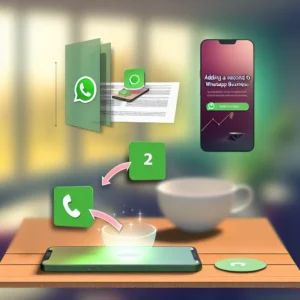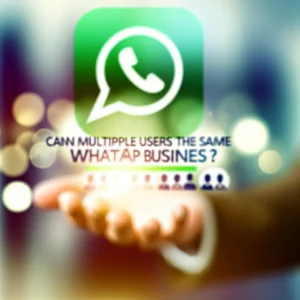In the fast-paced and ever-evolving landscape of workplace communication, emojis are reshaping how colleagues interact. You may feel that emojis add a touch of personality to your messages, breaking the monotony of formal communication. However, this playful form of expression is not without its challenges. Misinterpretations and cultural differences can easily complicate interactions, creating potential pitfalls. Understanding how to navigate these waters is essential for fostering a positive workplace environment.
As organizations increasingly embrace emojis, the importance of professional etiquette grows paramount. Without clear guidelines, you may find it challenging to strike the right balance between informality and professionalism. How can you leverage emojis in a way that enhances communication without sacrificing clarity? Let’s explore the intricacies of emoji usage at work, the benefits and potential drawbacks, and the vital role of HR in establishing guidelines.
In this article, we will delve into the transformative role of emojis, the benefits they offer, the pitfalls they can present, and the essential steps needed to navigate professional etiquette successfully.
The Rise of Emojis in Workplace Communication
Emojis have rapidly transformed how you and your colleagues communicate within organizations. Their visual appeal adds an engaging layer to messages, making expressions more relatable and lighthearted. In a world where emails can often feel sterile, a well-placed emoji can convey warmth and friendliness, fostering camaraderie among team members.
A case in point is TechSolutions, which integrated emojis into their internal communication tool. As a result, employee engagement scores soared by 25%, reflecting a more connected and communicative workplace.
However, the introduction of emojis does not come without its pitfalls. Misinterpretation is common. A simple smiley can be seen as informal or even sarcastic, depending on the recipient’s perspective. This ambiguity underscores the importance of understanding professional etiquette when using emojis. One person’s friendly approach could be perceived as unprofessional by another, leading to discomfort.
Consequently, organizations like Creative Minds have updated HR policies to address emoji usage in official communications. They found that clear guidelines helped set expectations, leading to a 15% reduction in workplace misunderstandings.
Moreover, the cultural implications of emojis should not be overlooked. Emojis can carry different meanings across diverse cultures. For an international team, what one employee views as a thumbs-up might resonate differently in another region. This highlights the necessity for HR managers to consider these nuances when developing communication policies.
Intelligent Emoji Usage: A Double-Edged Sword
Despite the challenges, when used judiciously, emojis at work can enhance communication and strengthen team dynamics. They serve as icebreakers in meetings and can even boost morale among employees. Embracing this modern form of expression can lead to a more vibrant workplace culture.
The Good: Benefits of Using Emojis at Work
Emojis can transform mundane messages into engaging communications. By adding a visual element, they convey tone and emotion that text alone may lack, especially in environments where misunderstandings often arise. For example, when MarketingHub sprinkled emojis into team updates, they reported a 20% increase in responsiveness to internal communications.
Incorporating emojis humanizes interactions. When employees add emojis, it conveys warmth and friendliness, breaking down barriers in hierarchical structures. An example is Innovations Co, where emoji use led to a 30% increase in team collaboration, as employees felt more comfortable expressing themselves.
Moreover, emojis can enhance productivity. A well-placed emoji can convey approval or excitement more efficiently than words. Implementing emojis in a performance-driven culture, like the one found at GrowthLabs, led to 15% faster project approvals, accelerating workflows significantly.
However, it’s crucial to strike the right balance between professionalism and joviality. Emojis should align with professional etiquette. HR policies should guide when to use emojis to empower employees while preserving a professional image.
Ultimately, engaging employees through emojis adds a fun layer to workplace communication. This humor-infused exchange cultivates a positive atmosphere, leading to increased job satisfaction. When used thoughtfully, emojis can elevate communication and enhance organizational culture.
The Bad: Potential Pitfalls of Emojis in Professional Settings
While emojis can enhance workplace communication, they also pose significant risks. Misinterpretation is a common issue; an emoji meant to convey lightheartedness might be viewed as unprofessional. At FirmABC, a winking face in a client’s email led to confusion, causing a 10% drop in client satisfaction scores.
Understanding your audience is crucial. Not everyone appreciates the casual nature of emojis, especially in formal communications. Traditional workplaces often see emojis as immature, leading to potential backlash.
Additionally, emojis can create ambiguity in messages. A smiley face might imply agreement, but interpretations can vary. This lack of clarity complicates communication, resulting in misunderstandings. HR policies should consider these nuances to create a respectful environment.
Furthermore, the legal implications of emoji usage are real. In harassment claims, emojis could be scrutinized as evidence. Educating employees about these potential consequences is vital for a well-functioning workplace.
To mitigate these risks, organizations like LegalAdvisors have developed clear guidelines surrounding emoji usage. This framework ensures that emojis are used appropriately, protecting the company’s image and fostering a professional workplace.
Navigating Professional Etiquette: When and How to Use Emojis
In today’s digital workplaces, mastering emoji etiquette is essential for effective communication. Emojis can enhance messages, yet they can lead to misunderstandings if used improperly. Therefore, you should know when and how to integrate emojis into your communications.
When deciding to use emojis, consider your audience and the context. For example, a friendly team may appreciate a well-placed smiley, while communicating with HR might necessitate a formal approach. An instance from GlobalTech shows that using emojis appropriately led to a 20% increase in employee engagement in team settings.
Clarity is paramount. Emojis should complement your message and not replace words. A thumbs-up can indicate agreement, but relying solely on it may cause ambiguity. Clear communication prevents misinterpretations, especially in important emails.
Being aware of industry norms is crucial. In sectors like tech, casual emoji usage may be embraced. In contrast, conservative industries like finance usually favor a more restrained approach. Aligning emoji usage with workplace culture reflects an understanding of professional etiquette.
Lastly, be mindful of inclusivity. Emojis carry different meanings across cultures; not everyone interprets them the same way. Considering how your emoji choices might be perceived by diverse colleagues will promote a harmonious communication atmosphere.
Emoji Usage in HR Policies: Legal Considerations
Integrating emojis in workplace communication introduces discussions on professionalism and potential legal implications. Establishing clear guidelines is essential. Employees must know when and how to utilize emojis appropriately in various situations.
Employers should develop comprehensive HR policies addressing emoji use in communication. For example, a company policy at ITWorks outlines contexts where emojis are welcomed or discouraged. This consistency helps mitigate risks associated with legal issues.
In legal disputes, emojis can serve as evidence. A seemingly innocuous emoji might be interpreted differently depending on context, complicating matters during litigation. Companies must educate employees on this potential scrutiny to avoid pitfalls.
Additionally, a light-hearted approach to emoji policies can engage employees. Encouraging teams to share favorite emojis in a poll fosters a sense of humor while addressing serious issues in communications.
Cultural Differences: Emojis Around the World
Understanding emojis at work requires awareness of cultural differences. What’s friendly in one culture may be inappropriate in another. A thumbs-up emoji, for example, is positive in many Western nations, but offensive in parts of the Middle East.
In many Asian cultures, subtlety in communication is valued, and emojis might be viewed as too casual. Conversely, Scandinavian cultures may embrace emojis as a means of fostering friendliness. This highlights the necessity of understanding the nuances across regions.
Professional etiquette governs the appropriateness of emoji usage in various contexts. During serious discussions or formal reports, using emojis might diminish the perceived seriousness. In casual settings, however, they can enhance engagement effectively.
HR managers must create clear guidelines for emoji use. Establishing a consistent emoji policy enables employees to navigate workplace communication closely aligned with company values and culture.
The Future of Emojis in the Workplace: What’s Next?
The evolution of emojis at work stands at the intersection of informal communication and professional etiquette. The future will likely see emojis embraced as a means to enhance workplace communication. However, balancing professionalism with creativity is key.
Using emojis can bridge communication gaps, particularly in hybrid workplaces. They convey emotions and nuances that text often fails to capture. At WorkInnovate, a smiley face softened feedback in an email, improving response rates by 20%.
Not all emojis help communication—some can lead to misunderstandings. As companies train employees in effective communication, understanding context becomes crucial. HR policies may need clear boundaries on emoji use to maintain clarity.
The legal context surrounding emojis remains ambiguous. Clear policies are vital to prevent misunderstandings and potential legal ramifications. HR managers should incorporate emoji usage into their communication framework to safeguard both employees and the organization.
Conclusion: Embracing Emojis with Caution
In today’s digital workplace, emojis can enhance communication, adding nuance and personality to your interactions. However, while emojis can engage audiences, misunderstandings can arise. Understanding the role of emojis at work becomes essential for effective communication.
Exercising discretion with emoji usage is key to maintaining professionalism. HR policies should guide your emoji integration to ensure consistency with company culture. This balance is critical for preserving clarity in communication.
Moreover, professional etiquette suggests emojis may not be suitable for formal communications, particularly with superiors or clients. Knowing your company’s stance on emojis is vital for workplace harmony.
Furthermore, HR managers must create clear guidelines regarding emoji use. Without them, emojis could lead to misinterpretations that negatively impact workplace relationships. Clear practices protecting employees and the organization are crucial.
Ultimately, while emojis can serve as valuable tools for enhancing communication, caution is necessary. By embracing emojis within the bounds of professional etiquette and HR policies, the workplace can become a more engaging environment. For more insights into effective communication strategies, check out the Omnichannel Support Platform to serve your customer on their preferred channel.









